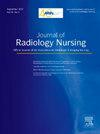Radiation Safety Practices Among Anesthesia Providers: A Multi-Site Observational Pilot Study
Q3 Nursing
引用次数: 0
Abstract
Background
The utilization of ionizing radiation has become a cornerstone of modern-day health care. Subsequently, anesthesia providers are susceptible to ionizing radiation exposure in the workplace.
Purpose
The purpose of this pilot study was to assess anesthesia providers’ compliance with radiation safety precautions within the operating rooms at 3 Mid-Atlantic suburban hospitals.
Methods
The researchers observed anesthesia personnel over a 2-week period. Education regarding recommended safety precautions was then provided to anesthesia personnel, and an additional 2-week postintervention observation period was conducted to assess whether radiation safety practices changed.
Results
Before the intervention, 19 (82.6%) study participants were compliant with radiation safety practices, and nearly all participants (n = 22, 95.7%) were compliant postintervention. The researchers identified several potential limitations and opportunities to further this discussion.
Conclusions
The researchers believe that standardizing radiation safety education and practices among anesthesia providers poses a potential area for quality improvement.
麻醉提供者的辐射安全实践:一项多地点观察性试点研究
电离辐射的利用已成为现代医疗保健的基石。因此,麻醉提供者在工作场所容易受到电离辐射照射。目的本初步研究的目的是评估三家中大西洋郊区医院手术室内麻醉提供者对辐射安全预防措施的依从性。方法对麻醉人员进行为期2周的观察。然后向麻醉人员提供有关推荐的安全预防措施的教育,并在干预后进行额外的2周观察期,以评估放射安全实践是否改变。结果干预前,19名(82.6%)研究参与者符合辐射安全规范,干预后几乎所有参与者(n = 22, 95.7%)符合辐射安全规范。研究人员发现了一些潜在的限制和机会来进一步讨论。结论研究人员认为,在麻醉提供者中规范辐射安全教育和实践是提高质量的潜在领域。
本文章由计算机程序翻译,如有差异,请以英文原文为准。
求助全文
约1分钟内获得全文
求助全文
来源期刊

Journal of Radiology Nursing
Nursing-Advanced and Specialized Nursing
CiteScore
0.80
自引率
0.00%
发文量
95
审稿时长
57 days
期刊介绍:
The Journal of Radiology Nursing promotes the highest quality patient care in the diagnostic and therapeutic imaging environments. The content is intended to show radiology nurses how to practice with compassion, competence, and commitment, not only to patients but also to the profession of nursing as a whole. The journal goals mirror those of the Association for Radiologic & Imaging Nursing: to provide, promote, maintain , and continuously improve patient care through education, standards, professional growth, and collaboration with other health care provides.
 求助内容:
求助内容: 应助结果提醒方式:
应助结果提醒方式:


